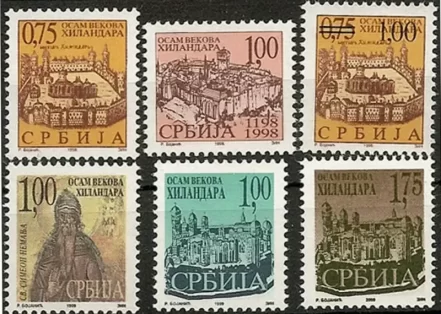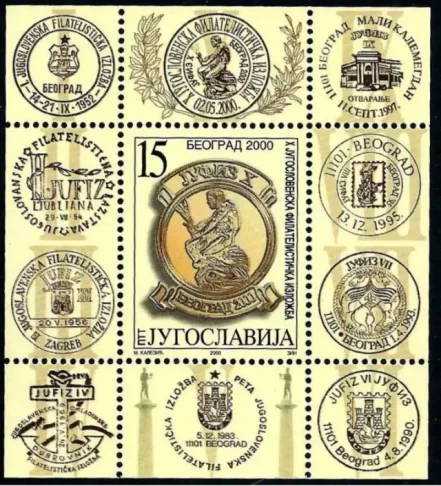Serbia year 1998/2000 stamps Christianity 800 Years Anniversary Monastery Hilandar MNH**
In 1998, the postal authority of the Federal Republic of Yugoslavia (which included Serbia) issued a significant commemorative series for the 800th Anniversary of the Hilandar Monastery. Hilandar, located on Mount Athos in Greece, is one of the most important spiritual and cultural centers for the Serbian people, founded by Saint Sava and Saint Simeon (Stefan Nemanja) in 1198.
Stamp Set Details (1998 Issue)
This is the primary set associated with the 800-year jubilee.
- Issue Date: June 24, 1998.
- Format: A set of 4 stamps and a Souvenir Sheet.
- Catalog Numbers: * Michel: #2844–2847 (Stamps) and Block 33 (Souvenir Sheet).
- Scott: #2416–2419.
- Designs: The stamps feature architectural details of the monastery, frescoes, and the famous “Hodegetria” icon.
The “2000 Christianity” Connection
In the year 2000, Yugoslavia/Serbia issued additional stamps for the “2000 Years of Christianity” (the Great Jubilee). Collectors often group these with the 1998 Hilandar set because they share similar religious themes and artistic styles.
- 2000 Issue: Featured various icons and monastery frescoes from across Serbia, acting as a thematic continuation of the Hilandar celebration.
Estimated Market Value (2026)
These stamps were issued during a period of high inflation and political transition, but they were produced in sufficient quantities that they remain affordable today.
| Item | Condition | Estimated Value (USD) |
| 1998 Hilandar Set (4v) | Mint Never Hinged (MNH) | $3.00 – $5.00 |
| 1998 Hilandar Souvenir Sheet | Mint Never Hinged (MNH) | $4.00 – $7.00 |
| 2000 Christianity Set | Mint Never Hinged (MNH) | $5.00 – $8.00 |
| Hilandar Tax Stamp (1998) | Mint / Used | $1.00 – $2.00 |
Note on “Tax Stamps”: Besides the regular postage stamps, Serbia also issued Charity/Tax stamps (obavezna doplatna marka) for Hilandar in 1998. These were mandatory surcharges added to mail to fund the monastery’s restoration. They are often found in large blocks of 25.










Reviews
There are no reviews yet.